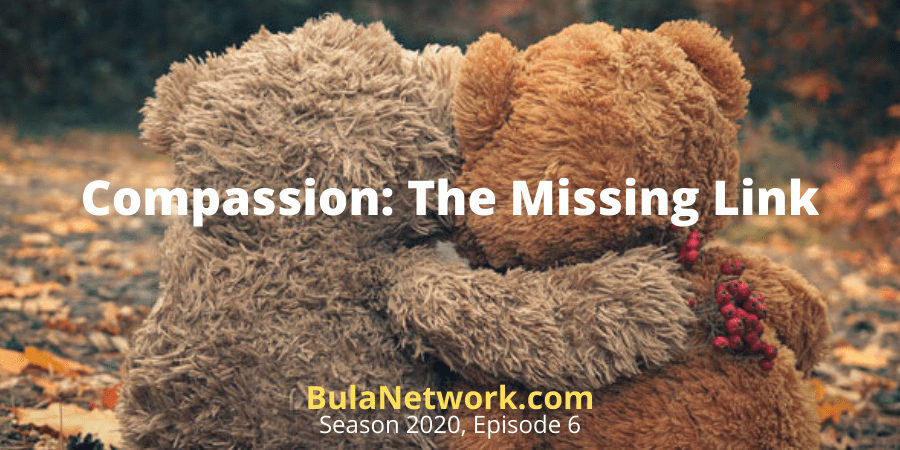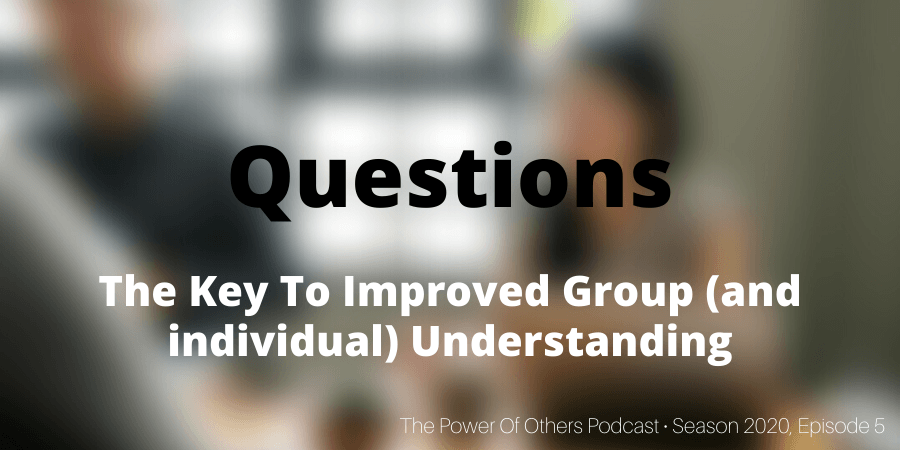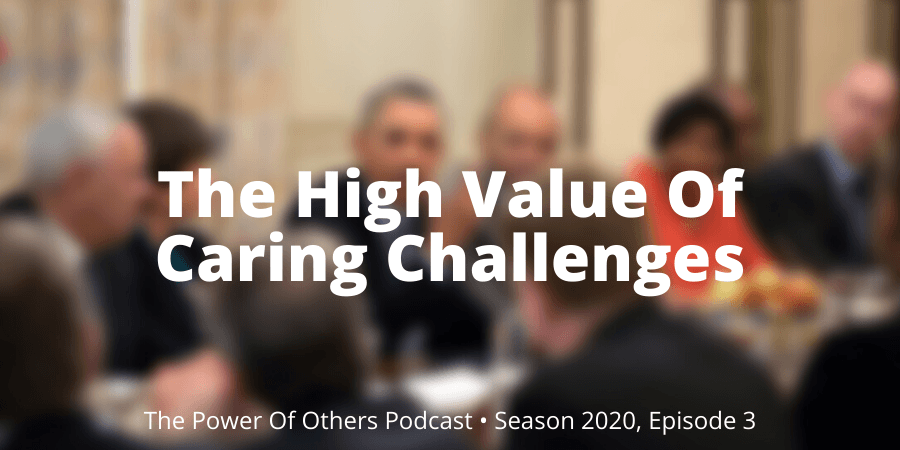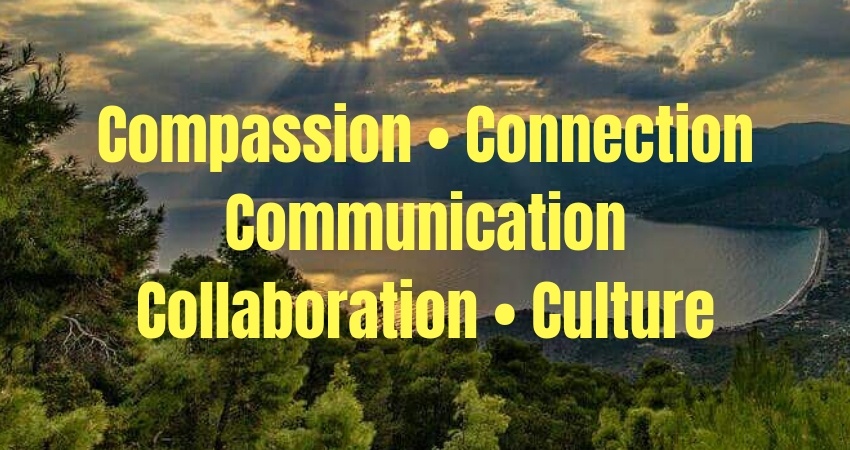Make Friends Of People Who Want Your Best (And People For Whom You Want What’s Best) – Season 2020, Episode 8
Podcast: Play in new window | Download (Duration: 21:04 — 29.0MB)
Subscribe: Apple Podcasts | Spotify | RSS | More
Look around. At your friends. At the people who surround you. The people with whom you interact the most. These people who influence your life. These people with whom you spend much or most of your time.
Echoing the law of averages, motivational speaker Jim Rohn said that we’re the average of our 5 closest friends. It’s also been said that if you show somebody your closest friends they’ll be able to show you your future.
Humans are more complex than that. It’s not so cut and dried. It’s not a certainty either.
Associations matter. The compelling proof is found in all of our lives.
We raise our children to make friends with good kids, not troublemakers. When they become teenagers we want them to guard their hearts so they don’t fall in with “the wrong crowd.”
1 Corinthians 15:33 “Be not deceived: Evil companionships corrupt good morals.”
We’re deceived if we disbelieve it. We can’t be closely associated with people expecting they’ll have no impact or influence on us. Especially the people who don’t want our best.
Jordan B. Peterson noted intellectual, included rule number 3 in his book, 12 Rules For Life: An Antidote To Chaos —“Make friends with people who want the best for you.”
Writes Peterson, “Friendship is a reciprocal arrangement…you should choose people who want things to be better, not worse.”
Of course, the challenge is knowing what’s better. And what’s worse. That can be our first deception – not knowing the difference.
Peterson continues…
“If you surround yourself with people who support your upward aim, they will not tolerate your cynicism and destructiveness. They will instead encourage you when you do good for yourself and others and punish you carefully when you do not.”
Upward aim. Growth. Improvement.
Destructiveness. Damage. Ruin. Loss.
Good.
Bad.
First, we must decide what we want. It’s unlikely – if not impossible – that anything will be improved until we first make up our minds that THAT is what we want.
Good doesn’t just happen. We have to seek it. Crave it deeply enough that we commit to it.
Bad does just happen. It’s easy requiring only self-centeredness. Selfishness. Disregard for others.
Bad habits occur when we just stop paying attention and do nothing. Not so with good habits. They demand higher intentions and dedicated effort. It’s the difference in building something or in letting entropy happen. Nobody is earning a degree in Entropy, but there are degrees in Architecture.
Have you decided to grow, improve and aim higher?
Good. Then you’re ready to not only help yourself but others. Look for people who want the best for themselves and others, too. People who have made up their minds just as you have. That common bond is where it has to start.
Sounds good, but is it real? Not always. Plenty of folks are able to talk a big game. Actions show you reality.
Gauge people by how they behave and the choices they make. You’ll quickly learn who wants their best and your best, too. Just remember, they’re paying attention to you, too. Judging you with the same judgment. So be sure you’ve made up your mind that you want to aim higher for yourself AND others. Behave accordingly.
After you’ve made up your mind subtraction is likely necessary. You have people in your life who aren’t that interested in your best. They may not even be interested in their own improvement or growth, except financially. You’re looking for people who value other things more highly than money or financial success. Personal and professional growth may include financial success, but friends who want your best and who want the best for themselves (and others) don’t think so shallowly.
You likely have some people in your life who are in trouble. People not doing well. I’m not talking about people in poor health or some other circumstance that isn’t the result of bad behavior. I’m talking about people of whom you must ask (as Dr. Peterson says in his book), “Why are they in trouble?” This isn’t a judgmental thing, but it is a discernment thing. The drug addict has his reasons, but mostly they’re excuses. He’s in trouble because of a string of poor choices and bad behavior. Your response to him is up to you. That’s an extreme. Your life is likely full of people where it’s more difficult.
How are you going to measure the value of others helping you take a higher aim for yourself and the others in your life?
That’s for you to decide. You have to think about it. Soberly. Carefully.
Get to the heart of your relationship. You’ll find sometimes the relationships seem quite one-sided. Make sure you’re seeing it as it truly is and not with some self-centered bias.
I’m very prone to help others. Before you think I’m being all high and noble let me explain. Advising, counseling and helping people figure it out gives me some very intrinsic rewards. I go searching for such opportunities without any expectations.
In time my behavior drives up the expectations of some. They grow to expect me to continue to jump because it’s what I’ve chosen to do. That’s entirely on me. Nobody has ever pointed a gun at me and threatened me to do something for them. I doubt they ever will. Of my own free will I’ve chosen to do whatever it is I have done for people.
There comes a time when I must weigh the value proposition. Quite often the value proposition stops working for me because gratitude breaks down while expectations soar. So I’ve tried to learn something that has never come easily for me – asking for and accepting help from others. It’s become my barometer as I’ve learned how to remedy my previous failings. That is, changing my behavior so I don’t corrupt what might otherwise have been a more profitable reciprocal relationship.
I’m only sharing what works for me. You have to decide for yourself what works for you. My barometer is pretty simple these days. Two factors. The first is gratitude. When gratitude is absent or slipping, I’m out. The second factor is my asking for help but only after repeated consistent help I’ve given. When it’s not readily extended, I’m out.
Those are 2 easy barometers I’ve chosen to make my own decisions about who wants my best and the best for others, including me. My experiences have taught me that people who lack gratitude aren’t people who can help me with my own upward aim. My experiences have also taught me that people for whom I’ve given consistent help – if they’re unwilling or reluctant to help me when I clearly state my request, then they’re never going to notice the times I may need help, but am unable to ask.
You can’t add value until you subtract those things that diminish it. That’s why subtraction is first necessary. Stop the hurting before you start the healing.
I employ those same 2 barometers for adding people. It takes time. It’s not nearly as easy as subtracting. For many, the hard part of subtracting is deciding then executing. Loyalty, family, friendship – there are lots of things that can get in the way. I get it. Professionally it’s easier. Personally, it can be ridiculously hard.
Finding people who truly are taking an upward aim – people seeking to do good for themselves and others – isn’t an easy task. You can find people willing to say that’s their aim, but finding people really putting in the work…much harder.
Why do you think it should be easier? Accomplishment, achievement, and success aren’t easy. The people driven by such things are rare. Not because of any innate lack, but because most don’t have the resolve, determination or willingness to sacrifice.
The tough going is when I’ve most seen my 2 barometers come to life. When a person’s drive is really tested, that’s when the truth emerges. About ourselves. And others.
All of my subtractions have happened during such times because that’s when I was able to see clearly the impact others were having on my life – and how my impact was no longer really serving to help them become better. It rubs both ways. Remember, it’s reciprocal.
Let me wrap this up with some action items that might help you take a higher upward aim.
Step 1 – Look in the mirror.
You may not see yourself clearly this way, but you have to start with self-examination. Don’t focus on anybody else. Or anything else. Just take square aim at YOU.
Gauge your aim. Is it really upward or is it inward? Selfishness is a hard thing to overcome. Make sure you’re not being selfish in what you want.
Step 2 – Make up your mind.
Upward aim. Growth. Improvement. Doing well. Make up your mind that those are the things you’re seeking. Remember, they all have a cost. And it’s not a cost most are willing to make. It demands the heart of a builder – a person committed to their own life architecture. And to help others architect their own improved lives, too.
Step 3 – Prove it.
Now put in the work. Don’t just talk the talk.
Step 4 – While you’re proving it, find others who are also proving it.
Here’s the trick. Finding people who are proving it is harder than finding people who make the claim. But you know how easy it is to make the claim yourself. That’s why step 3 precedes step 4. You have to get busy proving it yourself before you can accurately gauge others who are also proving it.
Be well. Do good. Grow great!
Randy






